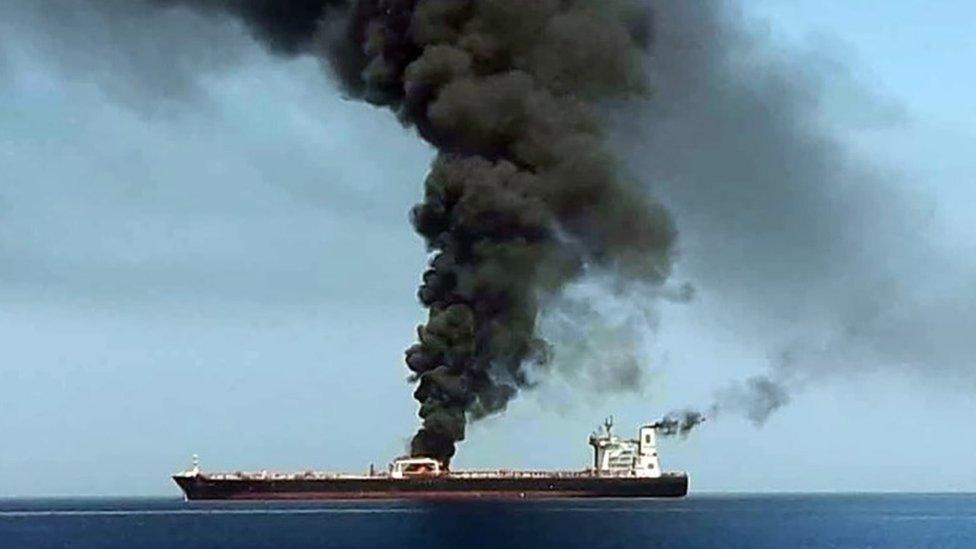Gulf crisis: US sends more troops amid tanker tension with Iran
- Published
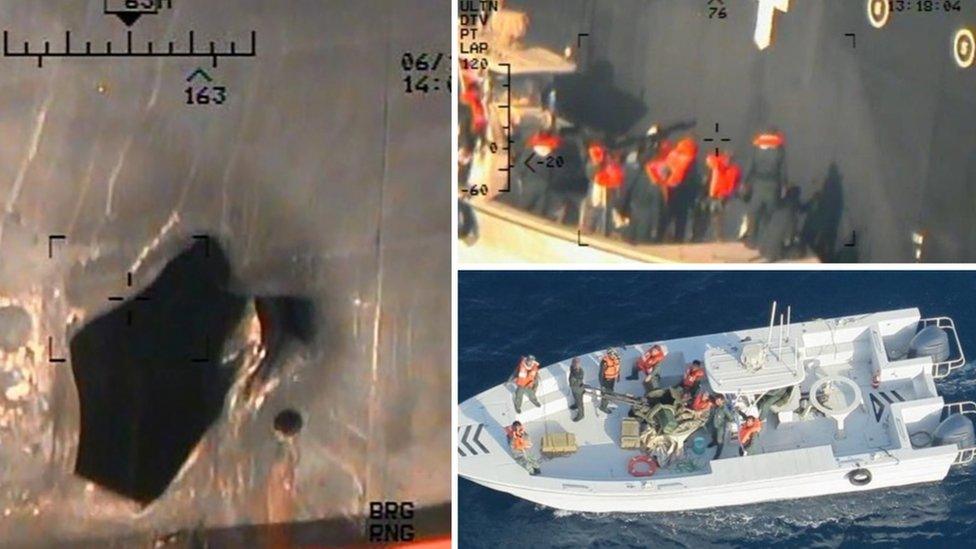
The US released new images on Monday it says provide more evidence Iran was behind recent Gulf of Oman attacks
The US military will send an additional 1,000 troops to the Middle East as tensions build with Iran.
Acting Defence Secretary Patrick Shanahan said the deployment was in response to "hostile behaviour" by Iranian forces.
The US Navy also shared new images it says link Iran to attacks last week on two oil tankers in the Gulf of Oman.
Washington has accused Iran of blowing holes in the vessels with mines. Iran has denied the allegations.
Tensions were further fuelled on Monday when Iran said its stockpile of low-enriched uranium would next week exceed levels set under the 2015 nuclear agreement.
Mike Pompeo: US pressure on Iran has been "very effective"
It recently stepped up production in response to the US tightening sanctions. The 2015 deal, from which the US has withdrawn, curbed Iran's nuclear programme in exchange for the lifting of sanctions.
Iran's President Hassan Rouhani said his country did not seek to wage war with any nation and had remained "loyal" to its international obligations.
Overnight three rockets hit a military base housing US troops north of Baghdad, the Iraqi military said. The US said it was "indirect fire", external and did not cause injuries.
No group said it had carried out the attack, though it followed US warnings of an increased threat to US interests in Iraq by Iranian-backed militias.
What do we know about the extra troops?
Announcing the deployment, Mr Shanahan said the US did "not seek conflict with Iran" but the action had been taken to "ensure the safety and welfare of our military personnel working throughout the region to protect our national interests".
He said the military would continue to monitor the situation and make adjustments to troop levels accordingly.
Security correspondent Frank Gardner looks at the evidence which the US says proves Iran's involvement in Thursday's attacks


The 1,000 additional troops being despatched to the Middle East is presented as a prudent defensive measure by the Pentagon; the recent attacks on the two oil tankers being taken as a clear sign of Iran's hostile intent.
They join some 1,500 additional troops sent last month. Taken together, these deployments inevitably raise tensions but they are clearly not in any sense an assault force.
If direct conflict does break out between Washington and Tehran, it will most likely be a sporadic air and maritime battle, not a land campaign.
But what worries Washington is attacks by the Iranian Revolutionary Guard Corps or Iran's proxies against US troops or facilities in the wider region - hence this latest deployment.
The US defence secretary is again insisting that Washington does not want conflict with Tehran, but tensions remain high and any miscalculation could lead to a serious escalation.

What do the latest images show?
Shortly before the announcement, the Pentagon released new images including some purporting to show the remnants of an unexploded mine on the Japanese-owned oil tanker damaged in the attacks.
The photos appear to show it being removed by members of the Iranian Revolutionary Guard Corps. The Pentagon has already released grainy video said to show the same episode.
Also seen in the latest images is apparent damage - a hole - above the waterline on the hull of the Kokuka Courageous.
Another image is said to show the Iranian Revolutionary Guard Corps vessel shortly after it was involved in removing the limpet mine.
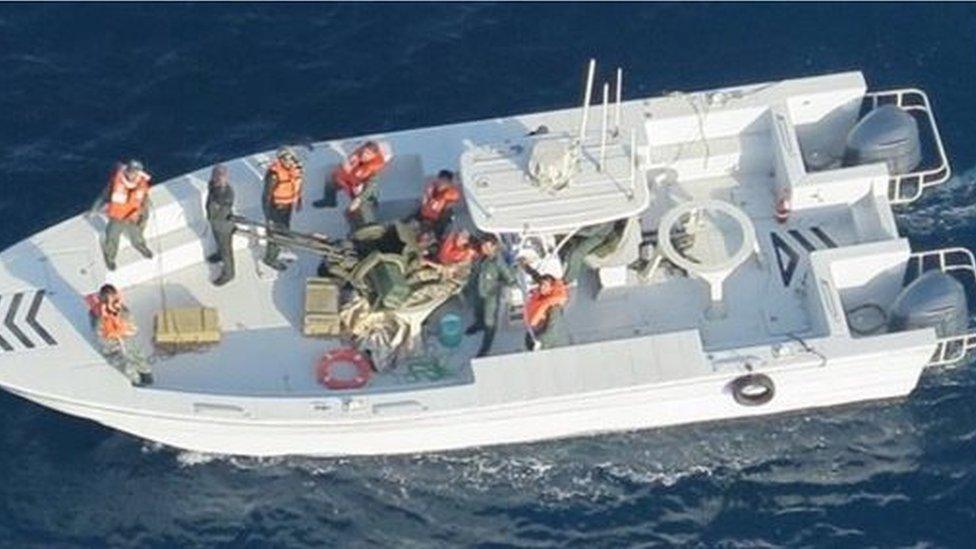
The other tanker damaged in the attacks was the Norwegian-owned Front Altair.
The US has implicated Iran in the latest attacks and four others outside the Strait of Hormuz in May, allegations denied by Iran.
How do other powers see the situation?
China urged the US to lower the pressure and for Iran to stick to the nuclear deal, warning of a "Pandora's box" in the region.
Russia - another party to the nuclear accord - also called for restraint, calling US actions "truly provocative".
Saudi Arabia also blames Iran for the attacks on the two oil tankers, while the UK said it was "almost certain" Iran was behind the blasts.
But EU foreign ministers meeting on Monday warned against jumping to conclusions and backed UN calls for an independent investigation.
Why are there new tensions?
In 2015, Iran agreed to a landmark deal with world powers to curb its nuclear development.
It agreed to limit the enrichment of uranium, which is used to make reactor fuel but also nuclear weapons, and other measures in return for relief from sanctions.
Mr Trump abandoned the nuclear accord last year and started to re-impose sanctions.
The move has crippled Iran's economy, which relies on oil, and Iran has responded by scaling back its nuclear commitments.
Atomic Energy Organisation of Iran spokesman Behrouz Kamalvandi says the enriched uranium limit will be breached on 27 June.
Speaking on Iranian TV, President Rouhani said the international community could see that it was the US, not Iran, that was acting badly.
"Iran has been loyal to its signature," he said. "Iran has been loyal to international agreements, and the one standing against us today [the US] is the one that has trampled all pacts, agreements and international accords."
Iran's Atomic Energy Organisation said earlier it was on course to exceed agreed limits on its low-enriched uranium stockpiles by 27 June.
But Iran said there was "still time" for European countries to act by protecting Iran from reinstated US sanctions.



- Published14 June 2019
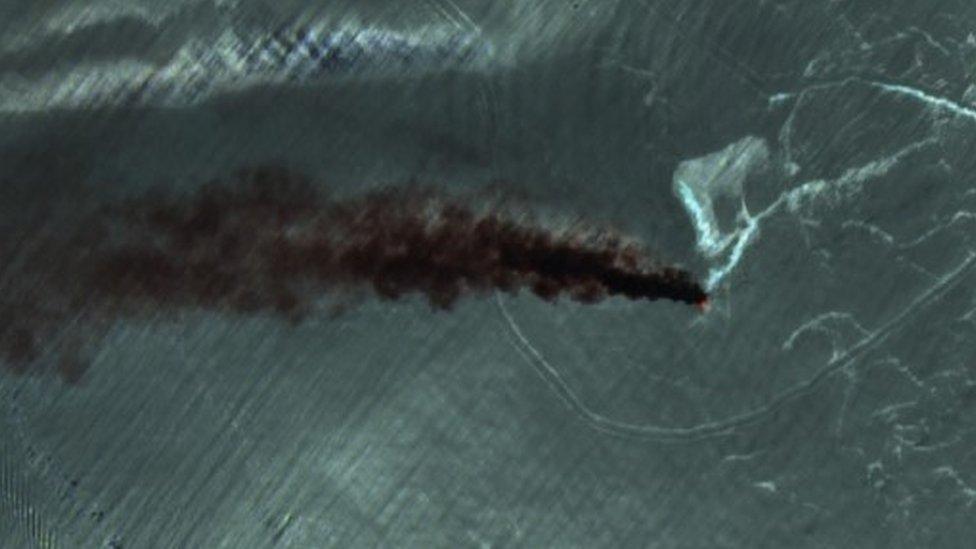
- Published13 June 2019
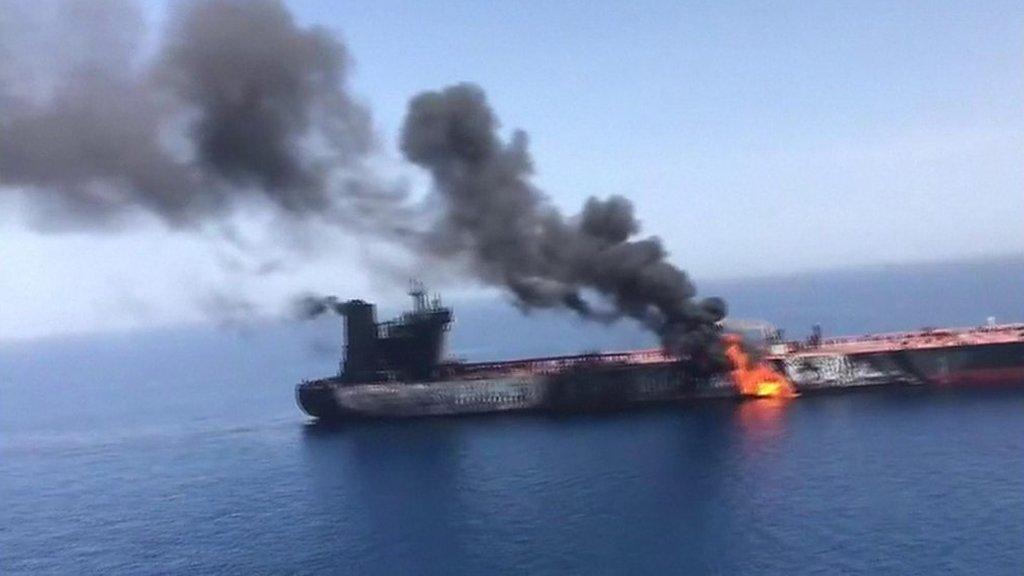
- Published13 June 2019
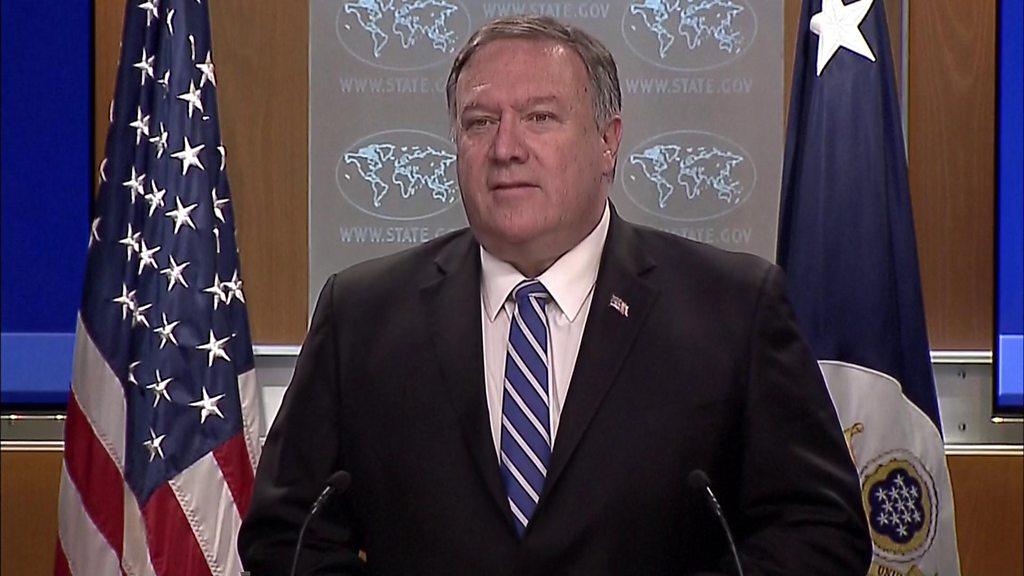
- Published18 June 2019
